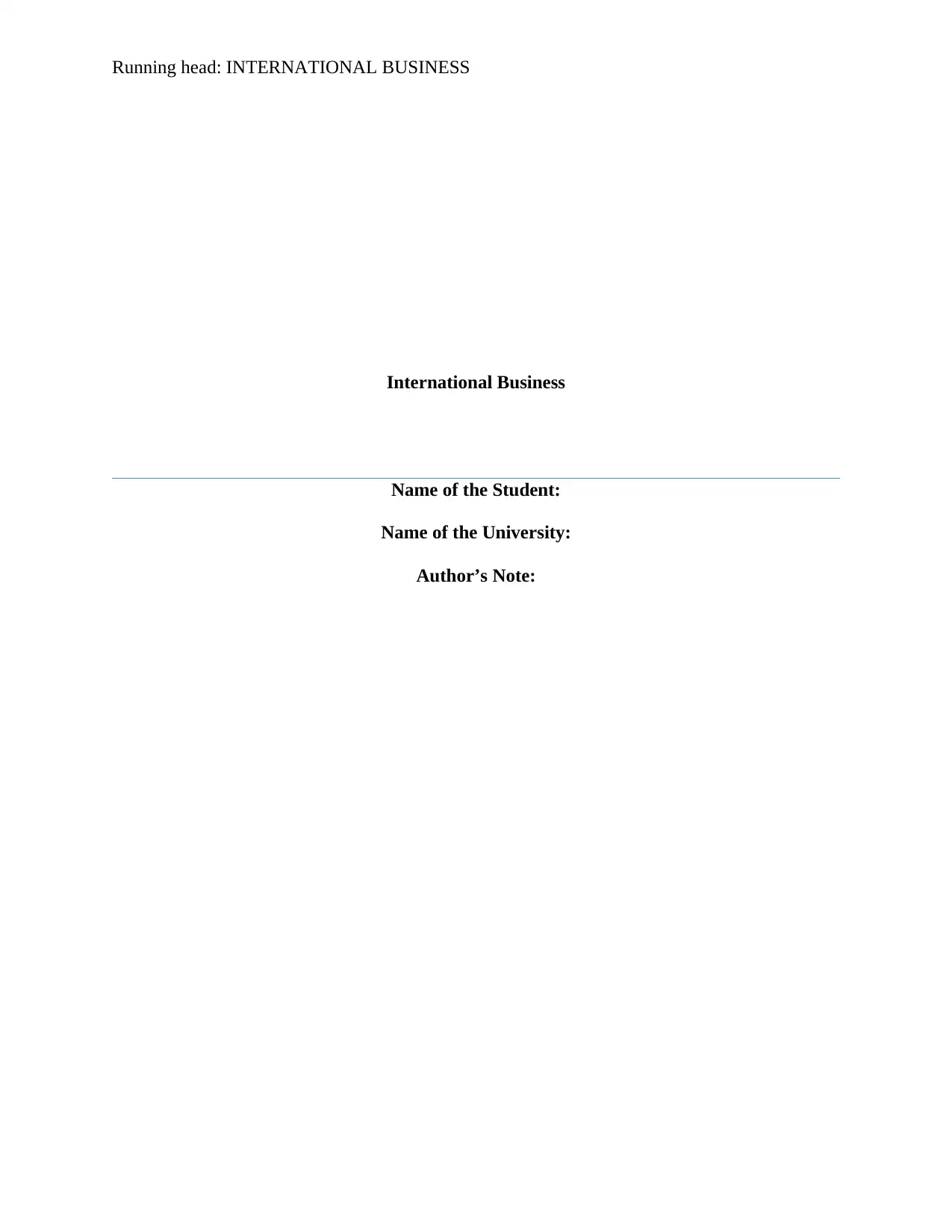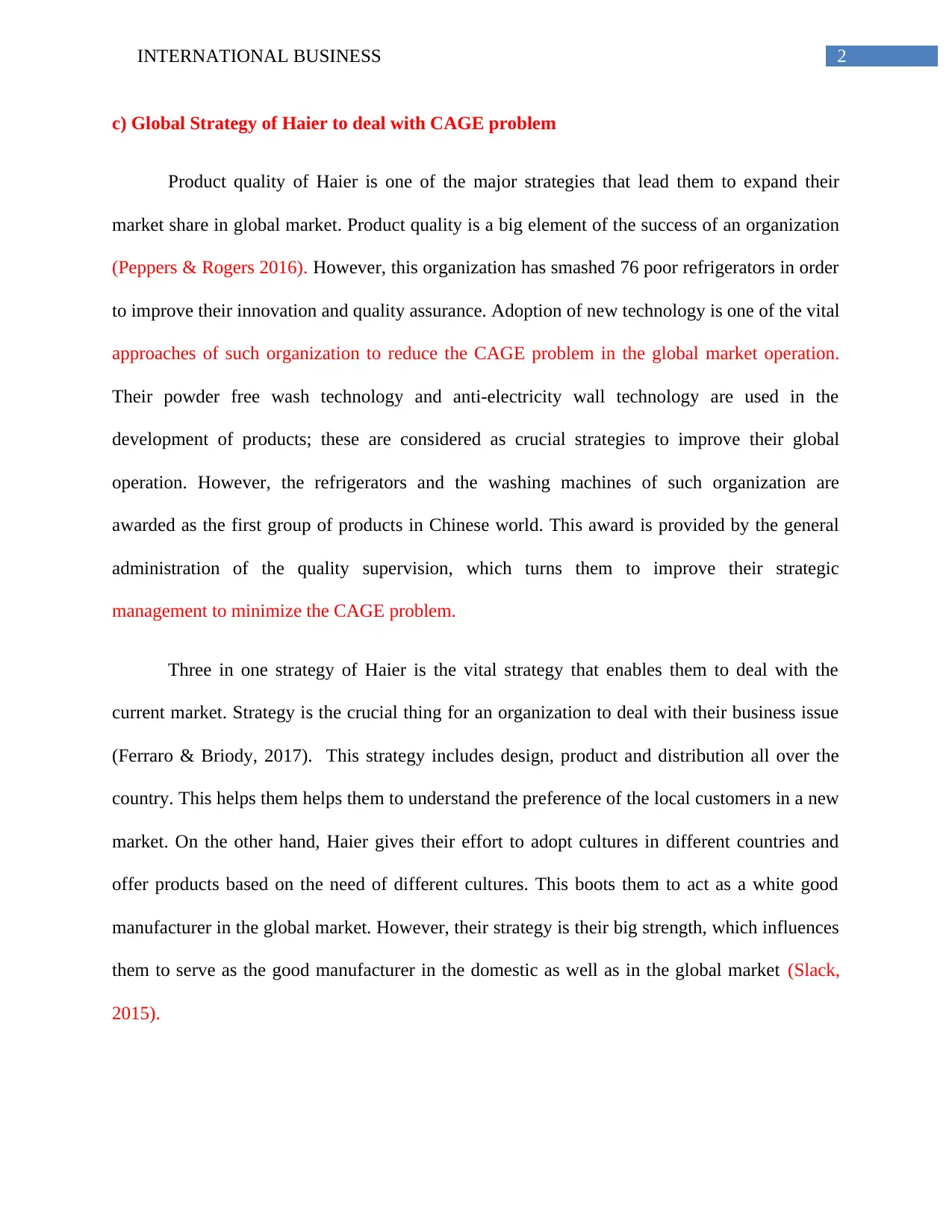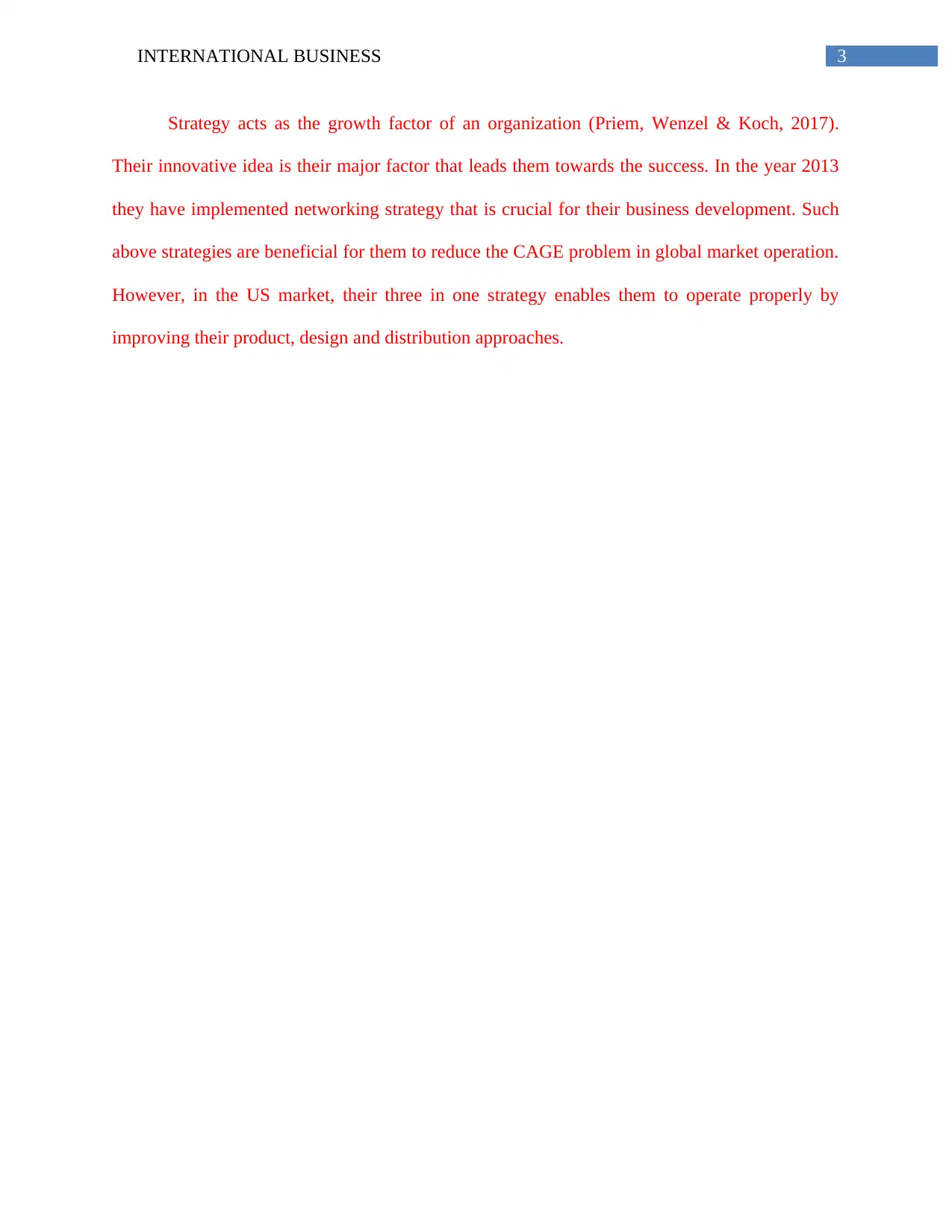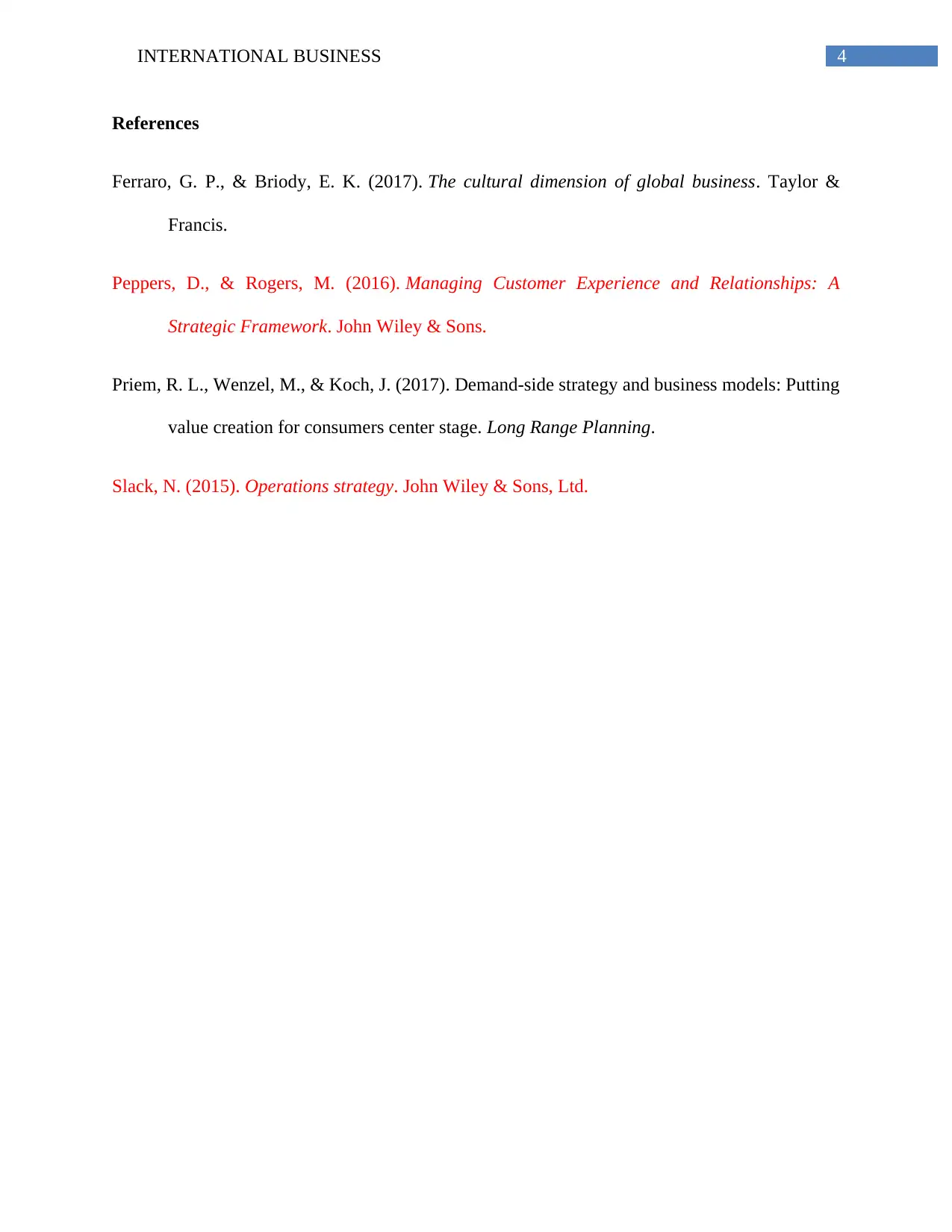International Business Report: Analyzing Haier's Global Strategy
VerifiedAdded on 2020/05/04
|4
|547
|168
Report
AI Summary
This report provides an in-depth analysis of Haier's global strategy, focusing on how the company tackles the challenges posed by the CAGE framework (Culture, Administration, Geography, and Economics). The report highlights Haier's emphasis on product quality and innovative technologies, such as their powder-free wash technology and anti-electricity wall technology, as key strategies. The report also examines Haier's 'three-in-one' strategy, encompassing design, product, and distribution, which allows the company to understand and cater to local customer preferences in new markets. Furthermore, the report discusses Haier's efforts to adapt to different cultures and offer products tailored to specific needs, contributing to its success as a global white goods manufacturer. The analysis includes a review of Haier's networking strategy implemented in 2013, and its impact on business development. The report concludes by emphasizing the effectiveness of these strategies in mitigating CAGE problems and achieving success in international markets. The report also cites several academic sources to support the analysis.
1 out of 4






![[object Object]](/_next/static/media/star-bottom.7253800d.svg)